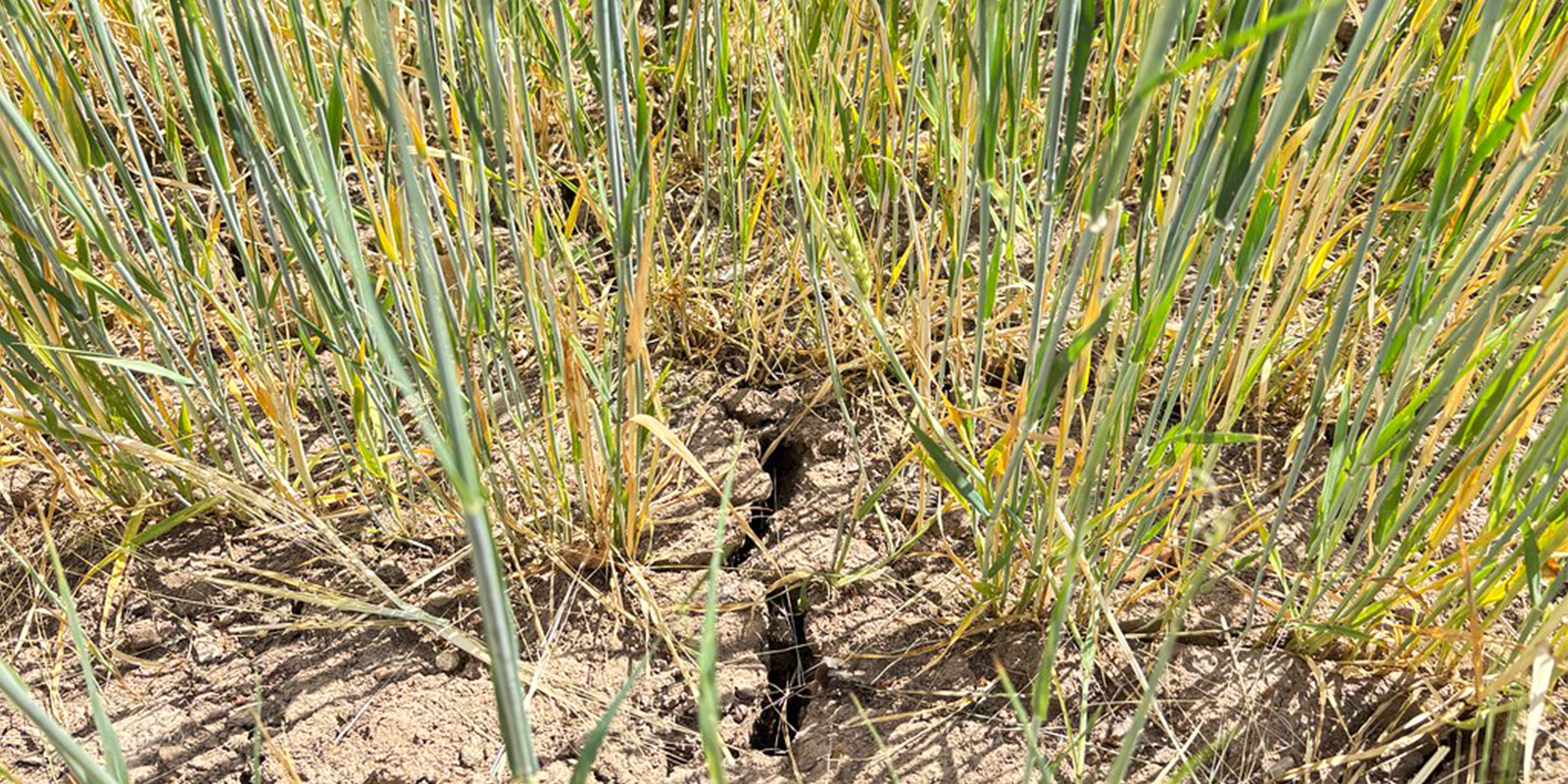When the cows come home…

1 July 2025
The late spring and into early summer has traditionally been a period of rapid plant growth on farms in the UK with peak grass growth, oilseed rape filling its pods, and cereal crops flowering and setting grain.
This is when the crops make the most of the long hours of sunlight for photosynthesis and the residual moisture in the soil from winter is topped up by regular rainfall to enable good plant growth.
But this year, during this period, England has received less than half the expected rainfall - the driest spring in more than 100 years - which has resulted in soils drying out leaving plants water-stressed.
“Grass growth has been severely impacted with plants producing fewer leaves and quickly going to seed,” explains Professor Nicola Cannon, Professor of Agriculture at the Royal Agricultural University in Cirencester.
“From about mid-May, farmers cut grass during the dry weather windows to store it to feed to livestock during the winter months. Many farmers make that grass into silage - basically moist grass wrapped up tight to exclude air to allow it to pickle and preserve the nutrients within – and livestock farmers usually plan to take between two and three cuts of grass a year to make into silage to fill up their stores ready to feed over the winter months.”
But, due to the warmest and sunniest spring since records began, the regrowth of grass after silage making, or after livestock grazing, has been so poor that farmers have found that they need to leave longer between silage cuts, or livestock grazing, meaning that, if they want to make sufficient silage to feed their livestock over the winter, they need more land to grow enough forage.
Professor Cannon added: “Despite this spring experiencing a record number of hours of sunshine, many plants have been unable to use this energy for growth as they have been under extreme moisture stress.
“Plants need to open pores, called stomata, in their leaves to allow carbon dioxide to enter the leaf where it is then fixed by a process utilising the sun’s energy to store the carbon in the form of carbohydrates in the plant.
“Some of these carbohydrates are stored in grains, such as wheat, which we then harvest to make foods like bread or which can be cut when still in the stems to make a higher energy feed for livestock during the winter.
“But, for many weeks of the growing season this year we have seen a whole range of plants that we grow for food, having to roll their leaves to try and conserve water and as a result they cannot photosynthesis effectively.”
This means that many farmers have simply not been able to make enough silage to feed their livestock during the colder months forcing them to re-evaluate their options as they head towards winter.
This could mean reducing the number of animals on the farm, often having to sell them in less favourable conditions, or buying in large quantities of extra food to make up for the shortfall of preserved grass available. And the fact that forage is going to be in short supply this winter will inevitably lead to higher prices being charged for it than normal.
Professor Cannon concluded: “The weather this spring has been far from ideal for UK farming. While the dry conditions have left many cereal crops thinner with fewer ears per metre squared than normal, some wheat crops do have very large ears this year which could be a saving grace at harvest if there is any rainfall to fill the grains.
“However, it’s a vicious circle for farmers as many crops have died off early due to extreme moisture stress and producing small grains, so harvest has already arrived early for many arable farms.”
Figures from the Met Office have shown that spring 2025 was the warmest and sunniest on record and the driest since 1893. They also show that spring is the fastest warming season in the UK, with an average temperature increase of 1.8°C since 1970, so these challenges faced in 2025 are likely to occur much more frequently and cause more headaches for UK farmers.